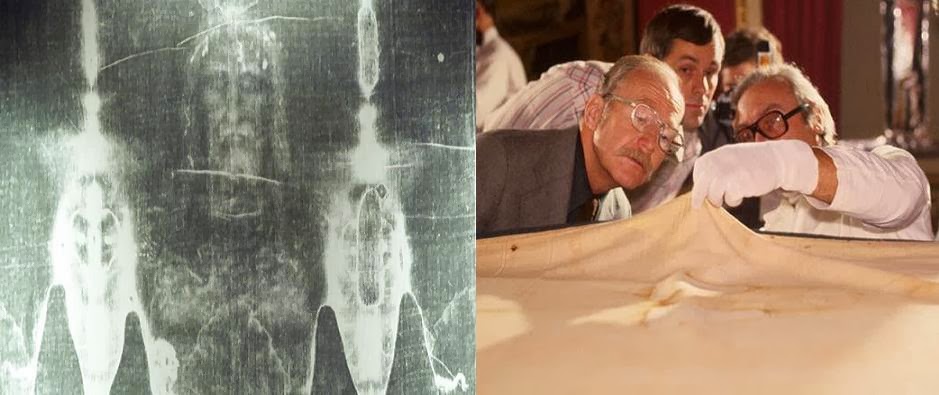
The authenticity of the Shroud of Turin has been in question for
centuries and scientific investigations over the last few decades have
only seemed to muddle the debate. Is the revered cloth a miracle or an
elaborate hoax?
Now, a study claims neutron emissions from an ancient
earthquake that rocked Jerusalem could have created the iconic image, as
well as messed up the radiocarbon levels that later suggested the
shroud was a medieval forgery. But other scientists say this newly
proposed premise leaves some major questions unanswered.
The Shroud of Turin,
which bears a faint image of a man's face and torso, is said to be the
fabric that covered Jesus' body after his crucifixion in A.D. 33. Though
the Catholic Church doesn't have an official position on the cloth, the
relic is visited by tens of thousands of worshippers at the Turin
Cathedral in Italy each year.
Carbon and quakes
Radiocarbon dating tests conducted at three different labs in
the 1980s indicated the cloth was less than 800 years old, produced in
the Middle Ages, between approximately A.D. 1260 and 1390. The first
records of the shroud begin to appear in medieval sources around the
same time, which skeptics don't think is a coincidence. Those results
were published in the journal Nature in 1989. But critics in favor of a
much older date for the cloth have alleged that those researchers took a
sample of fabric that was used to patch up the burial shroud in the
medieval period, or that the fabric had been subjected to fires,
contamination and other damaged that skewed the results.
The new theory hinges on neutrons released by a devastating earthquake that hit Old Jerusalem around the same time that Jesus is believed to have died. [Who Was Jesus, the Man?]
All living things have the same ratio of stable carbon
to radioactive carbon-14, but after death, the radioactive carbon
decays in a predictable pattern over time. That's why scientists can
look at the carbon-14 concentration in organic archaeological materials
like fabrics, bones and wood to estimate age. Carbon-14 is typically
created when neutrons from cosmic rays collide with nitrogen atoms in
the atmosphere (though it can be unleashed by manmade nuclear reactions, too).
The group of scientists, led by Alberto Carpinteri of the
Politecnico di Torino in Italy, suspect high-frequency pressure waves
generated in the Earth's crust during this earthquake could have
produced significant neutron emissions. (They simulated this by crushing
very brittle rock specimens under a press machine.)
These neutron emissions could have interacted directly with
nitrogen atoms in the linen fibers, inducing chemical reactions that
created the distinctive face image on the shroud, the scientists say.
The reactions also could have led to "a wrong radiocarbon dating," which
would explain the results of the 1989 experiments, Carpinteri said i


- news discovery


























0 Comment:
Post a Comment